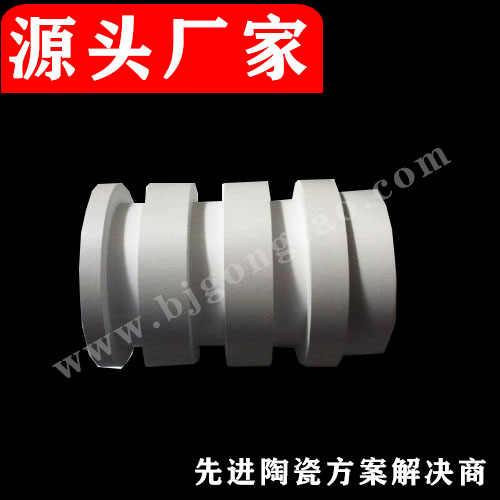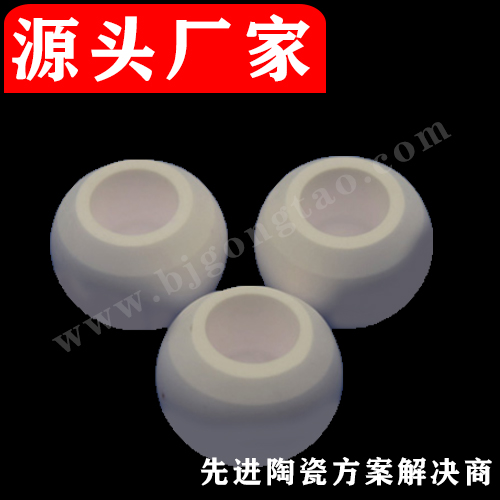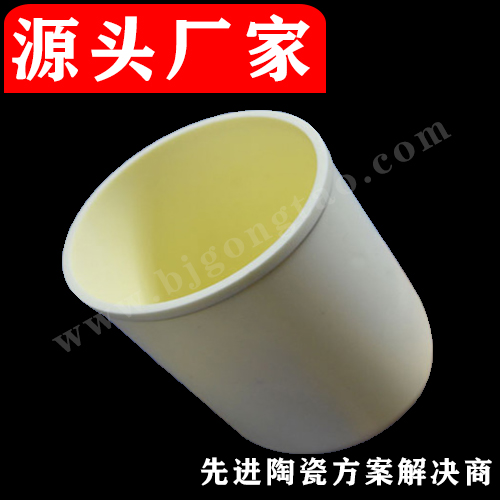
Suzhou Kaifa New Material Technology Co., Ltd.
Email:heqing@szkfxc.com
Email:sales@szbknm.com
Email:bkxc.bonnie@gmail.com
Research on Nonlinear Resistance Characteristics of Boron Carbide Ceramics
In this study, silicon carbide (SiC) was used as a sintering additive, and boron carbide ( B 4 C ) ceramics with different amounts of carbon (C) were prepared by pressureless sintering . With the increase of carbon content, the relative density of sintered samples increased. The grain size is significantly reduced. At the same time, as the carbon content increases , the conductivity of B 4 C ceramics changes from non-linear to linear. When boron carbide reaches 10wt%, the resistivity of B 4 C ceramic samples reaches 56.2Ω.cm, and in terms of mechanical properties, The flexural strength and elastic modulus increase slightly with the increase of carbon content, the fracture toughness remains basically unchanged, and the Vickers hardness is significantly improved.
In the air battery, the carbon material supporting the catalyst easily corrodes at a high potential, causing the catalyst to fall off the surface of the substrate and agglomerate, reducing the catalytic activity. In this case, a more stable catalyst substrate needs to be selected. Boron carbide ( B 4 C ) ceramics have excellent resistance to acid and alkali corrosion, low density, and outstanding mechanical properties. According to related research reports, when the catalyst is loaded on B 4 C , the activity will be higher. Therefore, boron carbide ceramics are expected to be used as catalyst carriers for air batteries. However, this study found that B 4 C ceramics exhibited non-linear resistance characteristics (there are almost no reports in this regard), which is not conducive to practical use. Therefore, this study attempts to add a conductive phase to B4C ceramics to change its electrical characteristics.
In this report, the researchers added carbon (obtained from high-temperature pyrolysis of phenolic resin) as the second phase, and silicon carbide (SiC) as a sintering additive. Among them, carbon can not only be filled in the B 4 C ceramic as a conductive phase , but also can remove the oxygen on the B 4 C surface to promote sintering. Furthermore, the effects of different carbon contents on the conductivity, mechanical properties and microstructure of B 4 C ceramics are compared .

Table 1 Composition ratio, relative density and electrical properties of different samples
micro structure
Figure 1 is a SEM and EDS diagram of a 6wt%C composite material, in which B 4 C (gray phase), SiC (white phase), C and pores (black) are dispersed in the sample, and Figure 2 is a B4C ceramic with different carbon content As can be seen from the figure, the number of pores in B 4 C ceramics gradually decreases with increasing carbon content, which corresponds to the relative density of different materials in Table 1. At the same time, with the increase of carbon content, the growth of B 4 C grains will be inhibited to a certain extent , and the grain size of the sample will be significantly reduced, which will have a greater impact on the electrical and mechanical properties of the sample.

Fig.1 SEM and EDS diagram of 6wt%C B4C ceramics

Figure 2 Microstructure of B4C ceramics with different carbon content (a) 3wt%C, (b)6wt%C, (c)8wt%C, (d)10wt%C
Electrical performance
Many research reports have focused on improving the electrical conductivity of B 4 C ceramics, and there are few studies on changing its nonlinear resistance characteristics. Figure 3(a) is the voltage (U)-(I) diagram of different samples. It can be seen from the figure that the B 4 C ceramic with less carbon content shows nonlinear conductive characteristics, and with the carbon content The UI curve of the sample gradually shows a linear characteristic. The nonlinear index of 10 wt% C B 4 C ceramic is very close to 1, indicating that it has a nearly linear conductive characteristic, and its resistivity is calculated to be 56.2Ω.cm.

Fig. 3(a) Electric field-current density of B4C ceramics with different carbon contents (b)(c) Equivalent circuit of B4C ceramics
(d)(e) B4C ceramic impedance diagram
Mechanical behavior
Figure 4(a) is a graph of the relationship between the flexural strength and elastic modulus of the sintered sample with the carbon content. It can be seen from the figure that the flexural strength of the material increases with the increase of the carbon content, when the carbon content reaches 10wt% When the strength value is 200Mpa, this change may have two reasons: (1) The increase in carbon content leads to a decrease in the grain size, and the smaller the grain size, the greater the bending strength; (2) relative The increase in density leads to a reduction in the number and size of pores that are seven points of fracture, thereby increasing the bending strength. The elastic modulus of the material also shows the same trend. The elastic modulus of B 4 C ceramic with 10wt% carbon content reaches 230GPa. Fig. 4(b) shows that the fracture toughness and Vickers hardness of the sintered sample become warmer with the carbon content. With the increase of carbon content, the fracture toughness remains basically unchanged, about 2.5MPa.m1/2, and Vickers hardness increased from 15.2GPa to 28.4GPa, where the increase in the relative density of the material played a major role.

Figure 4 (a) Changes in flexural strength and elastic modulus of B4C ceramics with different carbon contents (b) Changes in fracture toughness and Vickers hardness with carbon content
references:
Ming Zhu, Jian Chen, et. al., The electrical conductivity properties of B 4 C ceramics by pressureless sintering, Ceramics International, 2020





